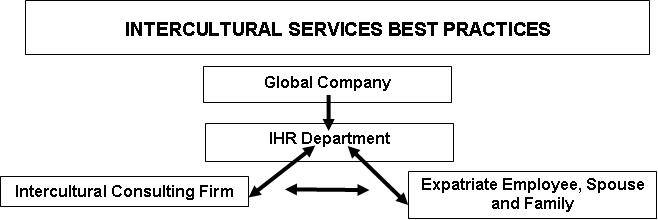 Author:
Author:
Michael Tucker, Ph.D – Tucker International
[Editor’s Note: We are very pleased to introduce Dr. Michael Tucker as a guest author. Dr. Tucker is the Principal at Tucker International, a full-service international human resources development company. He is the author of the Overseas Assignment Inventory (OAI), and Tucker Assessment Profile (TAP), which are validated instruments used to assess, select, and develop personnel and their spouses for international assignment.]
Your company is embarking on a new venture in a new market. Management has asked you develop a program for assessment and intercultural training for the team that will be deployed there from all over the world. Where to start?
The best practice to address this situation is to partner with an intercultural consulting firm that understands international business and your company. Using a well-planned and customized approach will deliver the best results. Here’s a real example from one of Tucker International’s clients, which illustrate the most effective approaches.
Case Study
An international HR Director at her global company’s headquarters contacted Tucker International to discuss a new company project in Africa. We knew the client organization well in terms of its international business strategy and international assignment policy and practices. She invited us to a meeting at headquarters to discuss the project. During the meeting, a review of the project was conducted – its business goals and schedule, organizational structure and staffing plans (some sixty-eight expatriate positions were planned). The start-up had just been approved, and there were very short time frames. Tucker International staff were dispatched to South Africa, where a situation and project assessment was conducted with client representatives, local informants and current expatriates from other companies.
The next step in the process was the provision of an intercultural assessment and selection program among multiple candidates for the project along with their spouses. About one hundred and forty candidates were assessed for the sixty-eight positions. The most culturally adaptable candidates and spouses were chosen to go on a look-see and home finding visit. They then completed written and telephone needs assessments with the consulting company.
Tucker International designed a five-day intercultural training program, which was delivered for everyone assigned to the project —- employees, spouses and youth. Immediate post-program evaluations were conducted and subsequent programs were modified based on the evaluations. The training program was very staff-intensive, and included the following resources:
- Highly Qualified Senior Master Trainer
- Expert on the Assignment Country
- Business Culture Consultant
- Belief Systems Consultant
- Host Country Resource People
- Returned Expatriate Spouse
- Assessment and Development Consultant
- Highly Qualified Youth Trainers
About one-year into their assignments in South Africa, Tucker evaluated the success of the expatriate employees and their families’ intercultural adjustment, as well as expatriate job performance. We also looked at the success and usefulness of the intercultural training program, and areas which required additional attention.
The project was a success from many perspectives – no early returns, business objectives were met on time and high levels of intercultural adjustment and expatriate job performance were achieved.
This approach is illustrated as follows:
- Company and Project Situation Assessment
- Participant Needs Assessment
- Intercultural Assessment and Selection
- Custom Design
- Three or More Training Program Days
- Training Staff Intensive
- Short and Long-Term Evaluations and Feedback
Summary
This case represents a true service approach to preparing expatriates for international assignments. In an ideal world, every global company would utilize a comprehensive and even elegant intercultural service like the one presented in this case. Unfortunately, corporate budgets don’t always allow International Human Resource Professionals to take their expatriate programs to this level.
The intercultural services approach illustrated here is certainly most applicable and affordable when a fairly large group is being mobilized. However, many of the aspects of this approach can be applied even for “one-off” assignments. With a global company’s success often depending to a great extent on the successful intercultural adjustment of their expatriates, it is critical that they try and provide as many of the services from this “Best Practices” approach as possible.
More about Michael:












You must be logged in to post a comment.